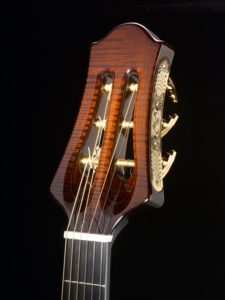Tips for Replacing Guitar Strings
String Replacement Weeks at Rick Imus Music Studio run in August and January. SRW’s are our semi-annual reminders to replace your guitar strings while studying online live or at one of our campuses in Milton, Campbellville and Acton. You probably suspect the benefits:
a) improved tone
b) greater and more consistent volume
c) better intonation / preparation for a “setup,” which is an adjustment made to ensure the notes stay in tune up and down the fretboard
d) cleaner strings
e) a chance to try a new gauge and/or brand
f) a “pick-me-up” as a player
That said, you could take advantage of our promotional coupons and have our qualified staff replace those wires, or with a spirit of adventure, do it yourself.
Here are five tips for replacing your guitar strings:
- Safety first. Have a garbage basket handy for old string cuttings. Knock down the upturned string at the tuning posts after cutting. Wash your hands after spraying and wiping down the fingerboard.
- Organize the string order before installation. For three-to-a-side models, lay out your strings 1,2,3,6,5,4 so that you’re not working under an installed string. For Strat (six-to-a-side) models, install them 6,5,4,3,2,1.
- Tools speed things up. Use a string winder – they come in manual and powered.
- Write the date of the string replacement on the wrapper.
- Wrap to the inside. Install strings toward the middle of the headstock for three-to-a-side.
Types of guitars and related instruments have different timelines for string replacement. General schedule guidelines for students’ strings include:
Nylon string / classical guitar – each year (August)
Steel string acoustic guitar – 6 months (August, January)
BTW, for a great breakdown on the world of acoustic guitars, we recommend this updated article from our friends at Beginner Guitar HQ.
Electric guitar – 6 months (August, January)
Ukulele – each year (August)
Electric bass – once a decade, or as required.

When you pick up your guitar after service, you can expect a “stretching out” period where the strings stabilize their pitches. New strings will have to be tuned up frequently for a bit after installation. Here some guidelines to help you be ready for your next performance or recording session:
Steel string acoustic – one day
Electric guitar – one or two days
Nylon string / classical guitar – one week
Ukulele – one week
Electric bass – one to two days
With diligent planning, you can enjoy playing a guitar that’s in tune with great tone.
